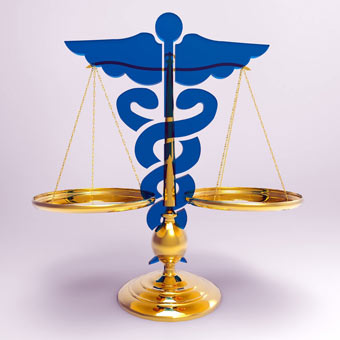Hypertension: Using a Home Blood Pressure Monitor
 Having our blood pressure measured by a doctor in a hospital or clinic can stimulate nervousness which causes our blood pressure to rise making the readings unreliable as the basis on which to make a clinical judgment. That is why taking our own readings at home can provide the doctor with useful data on our condition. This article explains how to use a home blood pressure monitor correctly so that the readings are accurate.
Having our blood pressure measured by a doctor in a hospital or clinic can stimulate nervousness which causes our blood pressure to rise making the readings unreliable as the basis on which to make a clinical judgment. That is why taking our own readings at home can provide the doctor with useful data on our condition. This article explains how to use a home blood pressure monitor correctly so that the readings are accurate.
The World Health Organization (W.H.O.) blood pressure classifications
W.H.O. has established standards for assessing hypertension without regard to age. By their scale:
130/80 to 85mmHg is considered normal (many doctors consider 120/80mmHg as normal).
The range of 130 to 139/85 to 89mmHg is considered high normal.
Hypertension is defined by this scale as greater than 139/89mmHg.
When age is taken into account, many doctors consider 140/90mmHg as being normal.
Variations in blood pressure
Our BP varies greatly on a daily as seasonal basis. These variations can be even more pronounced if we have hypertension. Normally, our BP readings rise while we are at work and are lowest during sleep.
When to take readings
The important thing is to take your readings at the same time each day and under the same conditions. This ensures that the data is consistent.
Blood pressure measured first thing in the morning after getting up and before taking any food is known as the “fundamental blood pressure”. These are the best readings to take.
How to use your home blood pressure monitor
There are two types of monitor commercially available:
Upper arm monitors: The upper arm monitor is similar to the sphygmomanometer used by your doctor, save that the machine inflates the cuff automatically and measures the diastolic and systolic pressures. It also measures your pulse and the time the reading was taken. Upper arm monitors can be used by people of all ages. but are particularly recommended for older men.
Wrist monitors: These are worn on the wrist in a similar way to a wrist watch, and take the same readings as the upper arm monitor. Wrist monitors are not recommended for older men.
Both types are accurate and easy and convenient to use. Keep these points in mind to ensure accurate and reliable results:
Use a monitor that is suitable for you.
Read the instructions that came with your monitor and make sure you follow them exactly as instructed.
Relax for at least 5 minutes before taking the measurements
Measure your BP at the same time of the day. Taking your “fundamental blood pressure” is recommended. Monitoring after meals or after doing a physical task or exercise will affect your readings
Keep a diary note of your systolic and diastolic values, your pulse with date and time of the measurements. The monitor will save several sets of readings to its memory, but is wise to keep your own record.
If you are not sure that you operated the device correctly, take a second set of readings just to be sure.
Share your readings with your doctor
There are two reasons why we should monitor our blood pressure at home:
To provide accurate and reliable data on which our doctor will base his or her clinical judgment; and
By monitoring our condition, we are taking responsibility for its management.
The more information we provide to our doctor, the more helpful it will be. If you have the facility, enter your readings, pulse and time the readings were taken into a spreadsheet. Using the spreadsheet tools, create:
a line graph of the data – this visually shows the trends in your data; and
an average of your diastolic pressures, systolic pressures and pulse rate.
Send this information to your doctor in advance of your next checkup or as directed.
When used correctly, a home blood pressure monitor correctly is a valuable tool for managing your hypertension.
